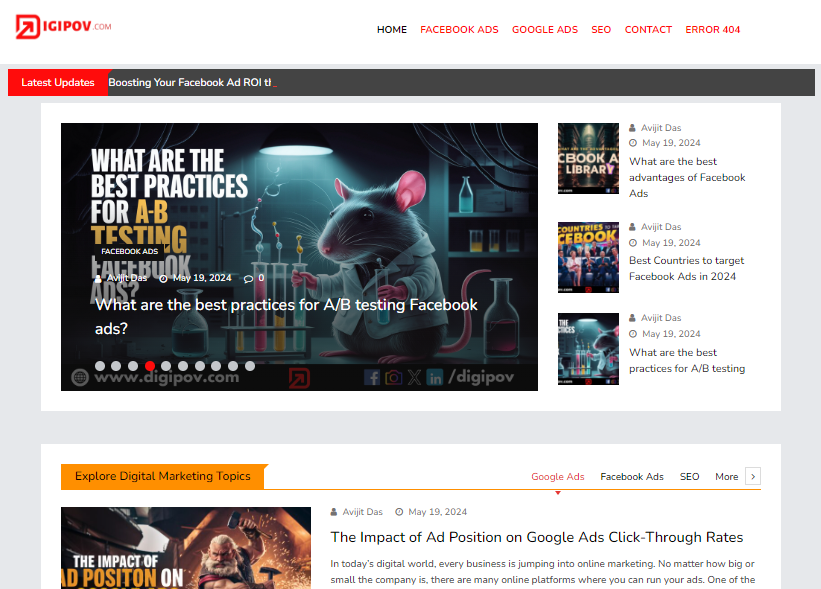In today’s digital world, every business is jumping into online marketing. No matter how big or small the company is, there are many online platforms where you can run your ads. One of the biggest and most used ones is Google Ads. Google AdWords is a top-notch platform for companies to promote their goods and services to various audiences. There are several factors and aspects to Google Ads. But one of the most important ones is the Ad position. If you are in the 1st position for your service-related keyword, you can maximize success by generating more clicks and conversions than your competitors. Thus, Ad position is a crucial element that might impact the performance of your marketing strategy when it comes to Google AdWords.
The position of your ad on a Google search engine results page is referred to as its “ad position” (SERP). Your chances of generating clicks increase with the position of your ad on the SERP. Now, we’ll look at how ad position affects Google AdWords click-through rates and how to make your ad position as effective as possible. Maximizing success with Google Ads click-through rates is essential for optimizing your marketing efforts and achieving the best possible results.
4o
What is Ad Position in Google Ads?
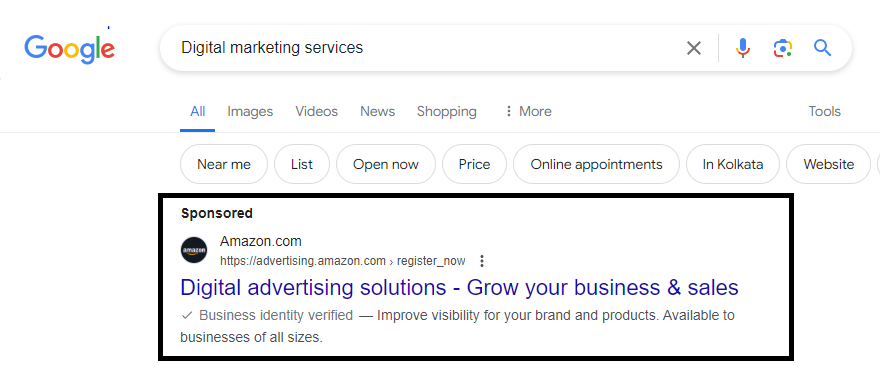
Let’s get a brief on what it adds and how it can affect your marketing goals. Ad position in Google Ads is placing your ad on the SERP with other ads. When bidding on keywords, you compete with other advertisers for ad placement. Google determines the ad position based on your maximum bid and ad quality score.
The higher your maximum bid, the more likely your ad will appear in a higher position. However, your ad quality score also plays an important role. To determine the ad quality score, Google measures your ad’s relevance, click-through rate (CTR), and landing page experience. This is another topic that will be covered in our upcoming Blogs.
Why Ad Position Matters for Google Ads Click-Through Rates
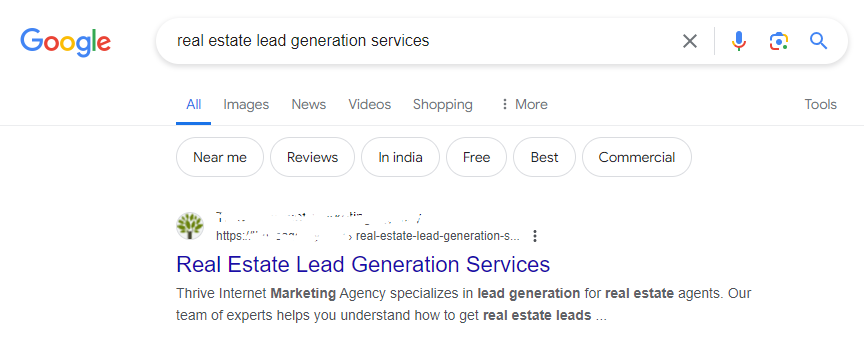
As you already know what ad position is, let’s dive into it further and find out how it can affect your ads directly. Ad position can make it or break it for you, as Ad position significantly impacts your Google Ads click-through rate (CTR). A higher ad position means more visibility and exposure for your ad, which translates into a higher CTR. On the other hand, a lower ad position means less visibility, lower exposure, and a lower CTR.
Many studies have shown a direct correlation between ad position and click-through rates. For example, a study by Wordstream found that the first ad position on Google’s SERP had an average click-through rate of 7.94%, while the second position had an average CTR of 5.57%. The study also found that the CTR dropped significantly for positions below the second position.
Another study by Google found that increasing ad positions from 8 to 5 resulted in a 335% increase in click-through rate. Additionally, increasing ad position from 5 to 1 resulted in a 300% increase in click-through rate.
Table of Contents
Benefits of High Ad Position on Google Ads Click-Through Rates
Higher Visibility:
The higher your ad appears on the SERP, the more visible it is to your potential customers. This increased visibility can lead to a higher Google Ads click-through rates (CTR) and more conversions. The more you reach your audience, the more chances you get to acquire customers. Also, it will help you beat your competitors and be the best.
Increased Click-Through Rates:
As mentioned before, a higher ad position typically results in higher Google Ads click-through rates. This is because more people are likely to click on ads at the top of the SERP. More Visibility = More CTR, no doubt about that, as I have also seen this once I reach the top of the page, my CTR increases drastically. And when CTR improves, my conversion rate also improves.
Improved Ad Performance:
A higher Google Ads click-through rates means that your ad is performing great, which can lead to a better quality score and a lower cost per click (CPC). It is an ideal situation for any business or marketer. We all want to get the best result at the lowest cost possible.
Increased Brand Awareness:
Brand awareness is something every brand must focus on to create their identity in the market. And when your ad appears in a high position, even if someone doesn’t click on it, they may still remember your brand name or product. And once your ads start ranking top on the SERP, you will generate a lot of attention. It can lead to increased brand awareness and customer loyalty.
How to Optimize Ad Position for Google Ads Click-Through Rates
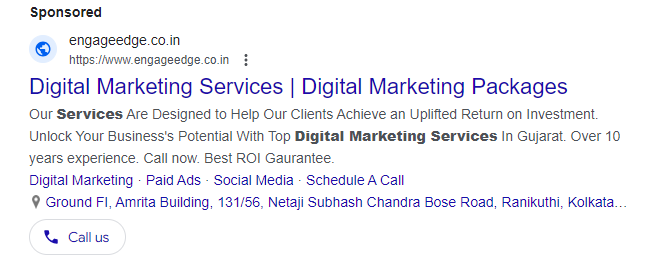
Focus on the top ad slots:
You also have experienced or have seen that people only focus on the top searches and ignore the rest. The top three ad slots on Google search results pages receive the most clicks. By ranking in these positions, businesses can increase their chances of getting clicked and improve Google Ads click-through rates. It’s important to note that these positions may come at a higher cost per click, so monitoring your budget and ROI is essential.
Target relevant keywords and audiences:
If your ads are irrelevant to the audience’s search, they will be shown, meaning no clicks. Ad relevance is a significant factor in ad position. By targeting specific keywords and audiences, brands can increase their chances of appearing in the top ad positions. Use keyword research tools such as SEMrush, Ubersuggest, or Google Keyword Planner and demographic data to target the right audience and improve ad relevance.
Use ad extensions:
The psychology behind extensions is to make your ads look bigger and occupy the maximum amount of the audience screen. Ad extensions are additional information that can be added to ads, such as phone numbers or links to specific pages. These extensions can improve user experience and performance and help ads appear in top positions.
Optimize bidding strategies:
In Google ads, bidding plays a crucial part as it can help you rank in the Top 3 positions. By adjusting bidding strategies based on ad position, brands can optimize their Google Ads click-through rates. For example, increasing bids for top ad positions can increase ad visibility and CTR.
Monitor performance data:
As a business owner or digital marketer, monitoring and optimizing your ads is essential. Monitoring performance data regularly, such as Google Ads click-through rates and conversion rates, can help brands identify areas for improvement and manage ad positions accordingly. Try experimenting with different ad positions and analyze the data to determine the most effective strategy for your business.
Here are some tips for improving ad relevance and landing page experience to boost ad quality score:
Conduct Keyword Research:
Conducting thorough keyword research is crucial for creating highly relevant ads. Using relevant keywords in your ad copies can help to ensure the potential audience is seeing your ad. This practice directly impacts your Google Ads Click-Through Rates (CTR) by targeting the right audience with precise keywords.
Create Ad Groups:
Tightly-themed ad groups for your different products/services can help you create highly relevant ads for each group. It also assists in improving overall ad relevance and boosts quality scores. This strategy is essential for enhancing Google Ads CTR.
Write Compelling Ad Copies:
Creating compelling ad copies that include your target keywords can help you create more relevant ads that resonate with your target audience. This will also help in improving your Google Ads Click-Through Rates (CTR). Effective ad copies can significantly increase engagement and conversions.
Optimize Landing Pages:
Landing pages are one of the most critical aspects of running ads, and optimizing your landing pages improves your ad relevance score. Landing pages should be easy to navigate, load quickly, and have a clear call to action (CTA). They should also be relevant to the ad that is running, which in turn boosts Google Ads CTR.
Use Relevant Ad Extensions:
Ad extensions such as site links, call extensions, and location extensions can help you provide more relevant information to users. They increase the relevance of your ads and ultimately improve your quality score. Using these extensions can also enhance your Google Ads Click-Through Rates by providing additional value to your audience.
Test and Optimize:
Testing and optimizing your ads and landing pages are essential for improving ad relevance and boosting quality scores. You can ensure your ads are highly relevant to your target audience by continuous consistent testing and making small changes. Regular optimization efforts can lead to better Google Ads Click-Through Rates (CTR) and overall ad performance.
Use Relevant Ad Extensions:
Ad extensions such as site links, call extensions, and location extensions can help you provide more relevant information to users. They increase the relevance of your ads and ultimately improve your quality score.
Test and optimize: Testing and optimizing your ads and landing pages are essential for improving ad relevance and boosting quality scores. You can ensure your ads are highly relevant to your target audience by continuous /consistent testing and making small changes.
Let us go through some innovative strategies and technologies that can boost up your Google Ads performance.
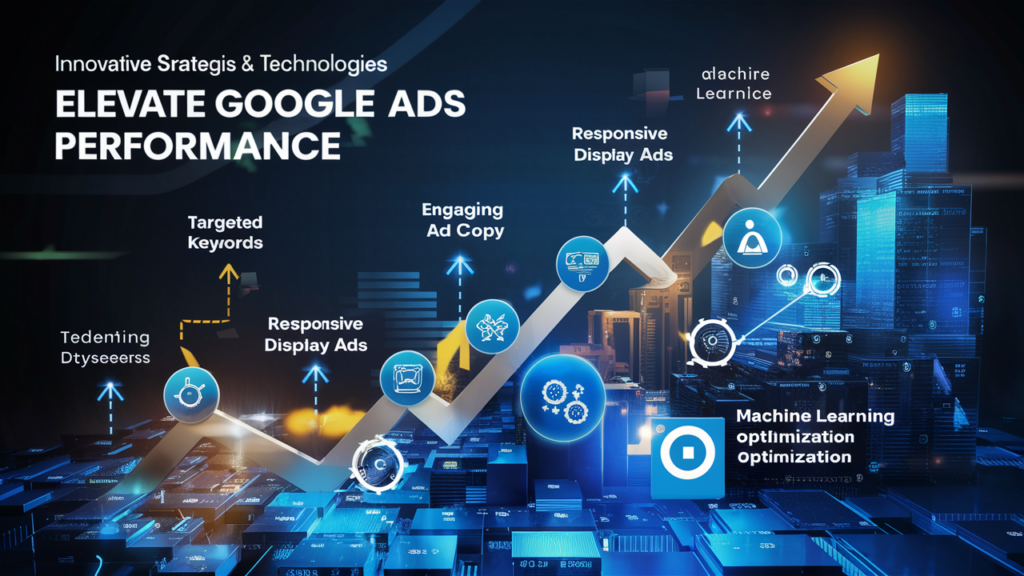
1. Artificial Intelligence and Machine Learning:
Utilizing power of data for Smart Bidding –
Smart Bidding is transforming Google Ads campaign management for advertisers with the help of Artificial Intelligence (AI) and Machine Learning (ML). ML-based Smart Bidding ensures that bids are adjusted in real-time based on a multitude of signals, which results in improved ad position per dollar spent. This kind of bid adjustment strategy increases CTRs to make sure your ads appear in the most effective positions.
2. Predictive Analysis:
Proactive campaign adjustment –
Being ahead of the market, businesses can place ads in a way that promotes visibility and captures attention. Advertisers are able to use predictive analytics tools to predict trends and user behavior hence being able to make proactive adjustments to their ad positions.
3. Dynamic Ad Extensions:
Enhancing Ad Visibility and User Engagement –
With dynamic extensions, you significantly increase the visibility of your ads while also giving users more interactive and relevant information; which in turn increases click-through rates. The dynamic ad extensions dynamically adapt as per user context, presenting additional information and links directly within the ad.
4. Responsive Search Ads:
Dynamic Matching of User Questions and Suggestions –
This is ensured by that your ads are more relevant to potential customers. It enhances relevance, thereby increasing CTRs as a result of dynamically linking the message with specific queries. This kind of adaptive approach is what enables your ads to reach out to more prospective clients.
5. Cross-Channel Integration:
Unifying User Experiences –
Other than this, messaging across channels helps in maintaining brand awareness while other things remain constant. Integrating Google Ads with other marketing channels like social media or email campaigns can lead to consistent branded experiences for example.
Branding will be much more than before, thus we are likely to gain trust from clients through improvement in engagement which will also influence CTRs positively.
Conclusion
In the vast world of online advertisement, let’s not forget that behind all these algorithms and strategies, the real deal is connecting with people. As advertisers, our job is to create campaigns that go beyond just click. We are aiming for those genuine connections in the midst of all this digital buzz. Let’s connect and enjoy this digital journey together.
Frequently Asked Questions : –
What is ad position in Google Ads and why does it matter?
Ad position refers to the placement of your ad on the Google search engine results page (SERP). Higher ad positions result in greater visibility, higher click-through rates (CTR), and increased conversions, making ad position crucial for effective marketing strategies.
How does ad position impact Google Ads click-through rates (CTR)?
Ad position significantly impacts CTR; higher ad positions lead to increased visibility and more clicks. Studies show that ads in the top positions have substantially higher CTRs compared to lower positions, directly affecting ad performance and conversion rates.
What factors influence ad position in Google Ads?
Ad position is influenced by your maximum bid and ad quality score, which includes factors such as ad relevance, CTR, and landing page experience. Optimizing these elements can help improve your ad position on the SERP.
How can I improve my ad position on Google Ads?
Improve your ad position by focusing on top ad slots, targeting relevant keywords and audiences, using ad extensions, optimizing bidding strategies, and regularly monitoring performance data. Enhancing ad relevance and landing page experience also boosts your ad quality score.
What innovative strategies can boost Google Ads performance and CTR?
Utilize AI and machine learning for smart bidding, predictive analytics for proactive campaign adjustments, dynamic ad extensions for enhanced visibility, responsive search ads for better relevance, and cross-channel integration for consistent branding. These strategies can significantly improve your Google Ads performance and CTR.


